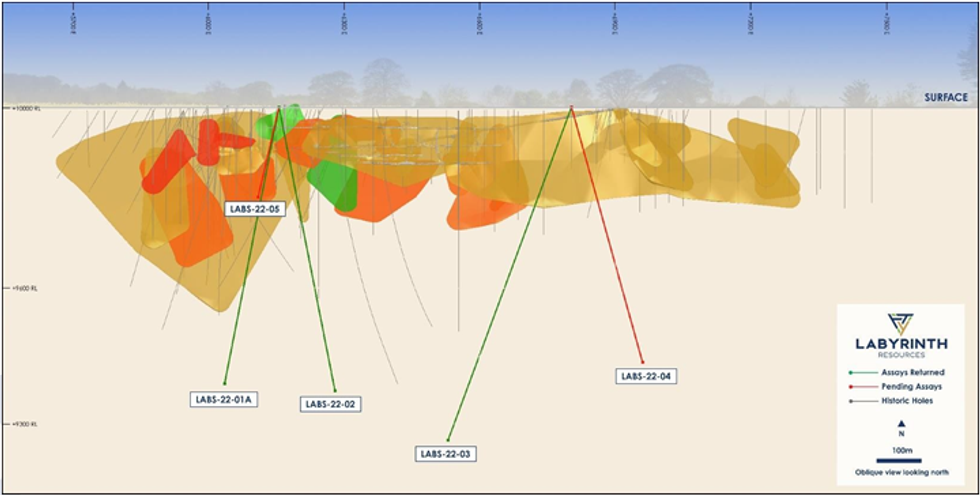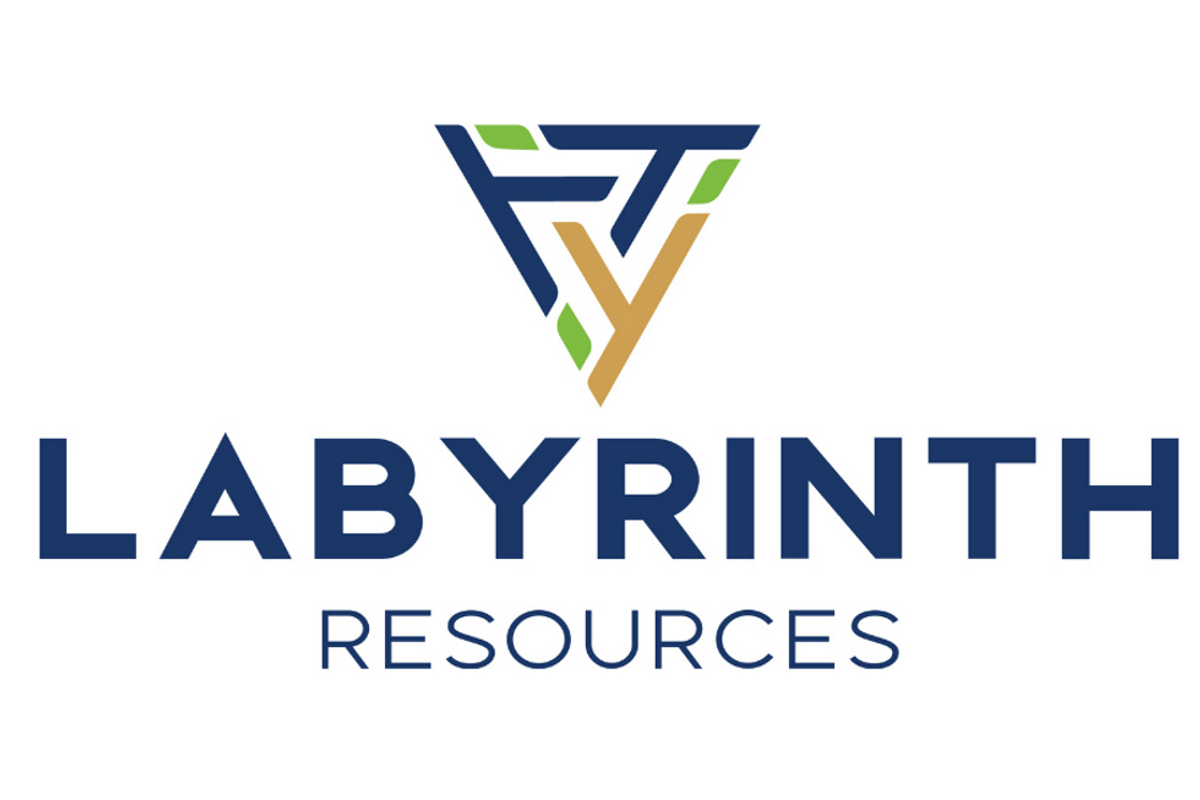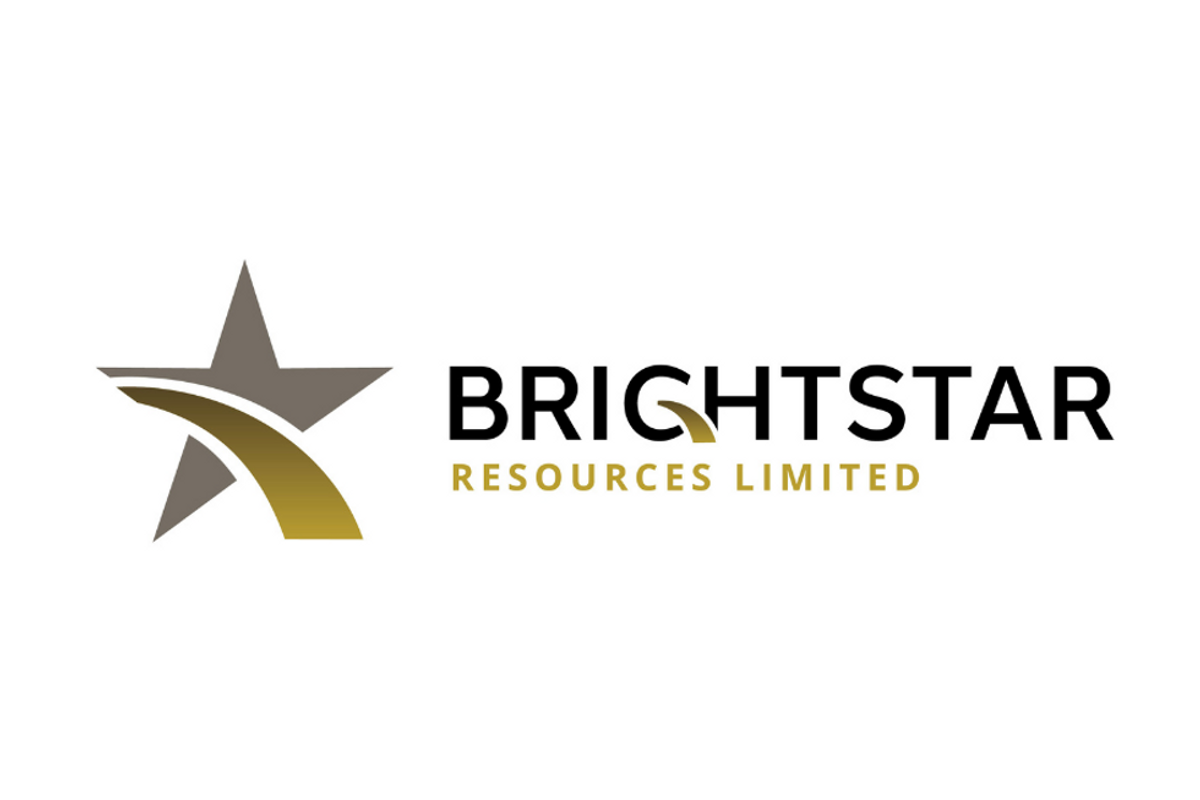
August 09, 2022
Maiden JORC Resource set for release next month; Latest results, which significantly extend known lodes and reveal gold in previously unmodelled zones, will form part of subsequent Resource update
Labyrinth Resources Limited (ASX: LRL) (‘Labyrinth’ or ‘the Company’) is pleased to announce that assays received for the first three holes of the maiden surface exploration program at its flagship Labyrinth Gold Project in Quebec, Canada contain high-grade results which extend the mineralisation significantly.
Key Points
- Assays received for first three holes of the maiden surface program at Labyrinth significantly extend the many currently defined lodes at depth and along strike
- Drilling also intersected mineralisation in previously unmodelled zones, indicating potential for substantial increases in scale of the deposit
- The initial outstanding result (reported previously – refer ASX Announcement 25 July 2022) in hole LABS-22-01A, located 125m down-dip of the defined Front-West lode, was:
- 2.2m @ 10.67g/t from 143.5m including 0.5m @ 44.12g/t, part of a broader mineralised interval of 8.1m @ 4.05g/t from 143.5m
- This result is strongly supported by the latest assays, with hole LABS-22-02 delivering an excellent result 375m down-dip of the defined Boucher lode of:
- 1.4m @ 13.32g/t from 652.3m including 0.9m @ 20.53g/t
- Visual quart and pyritic mineralisation observed in LABS-22-04 and LABS-22-05 indicate further down-dip and along strike extensions to existing modelled lodes, with assays pending
- Drilling at Labyrinth remains only shallow compared to other significant projects in the region, which are host to multi-million ounce deposits (refer figure 2)
Figure 1 – Maiden surface exploration targeting mineralisation extensions to depth of up to ~700m below surface
Highlights include 20.53g/t in LABS-22-02, which extends the Boucher lode by a significant 375m down- dip.
This follows the previously reported result of 44.12g/t in LABS-22-01, which was 125m down dip of the currently defined Front-West lode (Refer ASX Announcement 25 July 2022).
Drilling of phase one is now successfully complete, with 3,135m drilled across 5 holes in just 44 days, under budget and with no safety incidents.
Assays are pending for LABS-22-04 and LABS-22-05.
Quartz and pyritic mineralisation characteristic to Labyrinth has been observed across multiple lodes, with results confirming the mineralisation extends up to 375m down dip and to a depth of ~550m below surface, remaining open at depth and along strike.
Labyrinth is on track to publish its maiden JORC Resource next month. These latest assays and those pending will form part of a subsequent Resource update.
Labyrinth Chief Executive Matt Nixon said: “These are outstanding results which highlight the scope for substantial growth in the deposit, both along strike and at depth.
“We are in the throes of finalising our maiden JORC Resource and already we have established substantial mineralisation which sits outside these parameters, paving the way for a subsequent Resource update.
“We have barely scratched the surface at Labyrinth compared with the drilling completed at other major deposits in the Abitibi region. The scale of these endowments shows the upside we have at Labyrinth”.
Click here for the full ASX Release
This article includes content from Labyrinth Resources Limited, licensed for the purpose of publishing on Investing News Australia. This article does not constitute financial product advice. It is your responsibility to perform proper due diligence before acting upon any information provided here. Please refer to our full disclaimer here.
LRL:AU
The Conversation (0)
31 August 2023
Labyrinth Resources
Developing underexplored gold assets in the prolific Canadian Abitibi Gold Belt and the Yilgarn Craton of Western Australia.
Developing underexplored gold assets in the prolific Canadian Abitibi Gold Belt and the Yilgarn Craton of Western Australia. Keep Reading...
26 December
Rick Rule, Ed Steer, Vince Lanci and More — Our Top 5 Interviews of the Year
2025 was a breakout year for gold and silver, and throughout its twists and turns the Investing News Network (INN) turned to experts for help navigating the markets.The INN team spoke with dozens of industry insiders over the course of the year, spending time with seasoned professionals who can... Keep Reading...
25 December
Jeffrey Christian: Gold, Silver at Record Prices, Expect Spikes Higher in 2026
Jeffrey Christian, managing partner at CPM Group, shares his outlook for gold and silver in 2026, explaining why he expects higher prices for the metals. "We think that 2026 is going to be a more hostile environment than 2025, and that will cause investors to buy more gold and silver. So we're... Keep Reading...
24 December
What Was the Highest Price for Gold?
Gold has long been considered a store of wealth, and the price of gold often makes its biggest gains during turbulent times as investors look for cover in this safe-haven asset.The 21st century has so far been heavily marked by episodes of economic and sociopolitical upheaval. Uncertainty has... Keep Reading...
24 December
Blackrock Silver Announces C$15 Million Strategic Investment by Two Cornerstone Purchasers
Blackrock Silver Corp. (TSXV: BRC,OTC:BKRRF) (OTCQX: BKRRF) (FSE: AHZ0) ("Blackrock" or the "Company") is pleased to announce a non-brokered private placement (the "Offering") of up to 13,636,363 units (the "Units") at a price of C$1.10 per Unit for gross proceeds of up to C$15,000,000. Each... Keep Reading...
24 December
Gold Price Hits New Record, Breaks US$4,500; Silver, Platinum Also at All-time Highs
Gold marked a new price milestone on Tuesday (December 23), continuing its record-breaking 2025 run. The spot price rose as high as US$4,511.83 per ounce, hitting that point at 4:04 p.m. PST. Don't forget to follow us @INN_Resource for real-time updates!Securities Disclosure: I, Charlotte... Keep Reading...
23 December
November campaign production update
Brightstar Resources (BTR:AU) has announced November campaign production updateDownload the PDF here. Keep Reading...
Latest News
Interactive Chart
Latest Press Releases
Related News
TOP STOCKS
American Battery4.030.24
Aion Therapeutic0.10-0.01
Cybin Corp2.140.00







